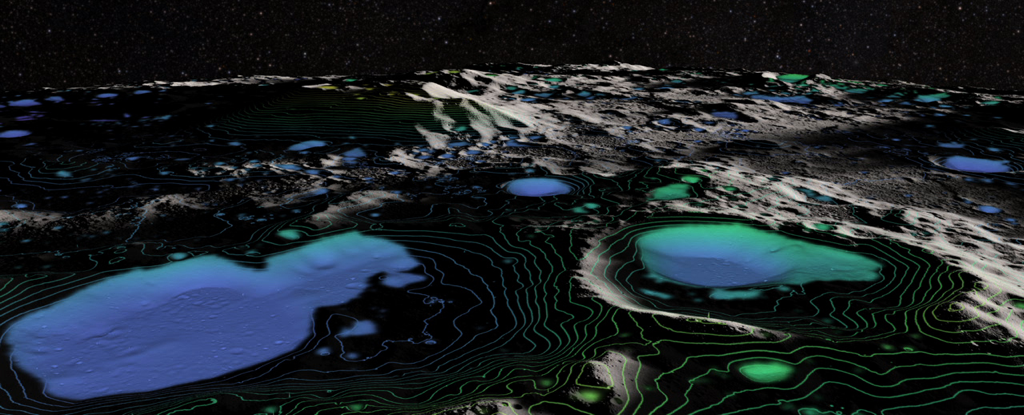
Posted on 10/26/2020 11:32:18 AM PDT by Red Badger
It's official. There's water on the Moon.
We've thought that there was for over a decade, based on detections described back in 2009, but there was room for interpretation in the wavelengths used. Now, using a different wavelength unique to water, scientists report the first unambiguous detection.
Those 2009 conclusions were apparently on the money.
The ambiguity arose because the 2009 detections were made in the 3-micrometre infrared band. At this wavelength, there were two possibilities - water, or another hydroxyl compound comprising hydrogen and oxygen.
Led by astronomer Casey Honniball of the NASA Goddard Space Flight Centre, a team of scientists decided to look into the wavelength that could confirm or overturn those findings. The 6-micrometre infrared band should show a line that can only be created by two hydrogen atoms and one oxygen atom - what is called the H-O-H bend vibration.
But actually making an unambiguous detection in that band is tricky. It requires the use of the Stratospheric Observatory for Infrared Astronomy (SOFIA), a special, one-of-a-kind telescope that is flown in a plane above the bulk of Earth's atmosphere.
"SOFIA is the only current and planned observatory capable of these observations," Honniball told ScienceAlert.
"Current lunar spacecraft do not have instruments that can measure at 6 micrometres, and from the ground, Earth's atmosphere blocks 6-micron light, and so it cannot be done from ground-based observatories. SOFIA flies above 99.9 percent of the Earth's water vapour, which allows 6-micrometre light to pass through and be observed. And luckily SOFIA's FORCAST instrument can make 6-micrometre measurements and look at the Moon."
Using FORCAST, the team carefully studied a region in which the 3-micrometre detections had been made - high southern latitudes, around the south pole. There, they found the emission line they had been hoping for - that unique signature that could only be created by the H-O-H bend vibration.
Based on their detections, the team estimates water abundances of around 100 to 400 parts per million - consistent with 3-micrometre detections made by the Moon Mineralogy Mapper.
Of course, there are no liquid lakes sloshing around on the lunar surface, and any frozen water would sublimate as soon as the sunlight hit it. But there are multiple ways the Moon could still be harbouring surface water.
"We mainly think the water is in glass," Honniball said.
"When a micrometeorite impacts the Moon, it melts some lunar material, which quickly cools and forms a glass. If there is water already present, formed during or delivered during the impact, some of the water can be captured in the structure of the glass while it cooled."
In a separate paper led by astronomer Paul Hayne of the University of Colorado Boulder, scientists explored another possibility - regions of permanent shadow in polar craters. At high latitudes, high crater rims create regions that sunlight never touches.

Permanently shadowed regions where lunar water may exist. (NASA's Goddard Space Flight Centre)
It smells all right...it smells like appropriation season.
The photo above clearly shows lakes there on the moon....
I wonder how the fishing is?

Man catches Moon Fish......................
Disclaimer: Opinions posted on Free Republic are those of the individual posters and do not necessarily represent the opinion of Free Republic or its management. All materials posted herein are protected by copyright law and the exemption for fair use of copyrighted works.